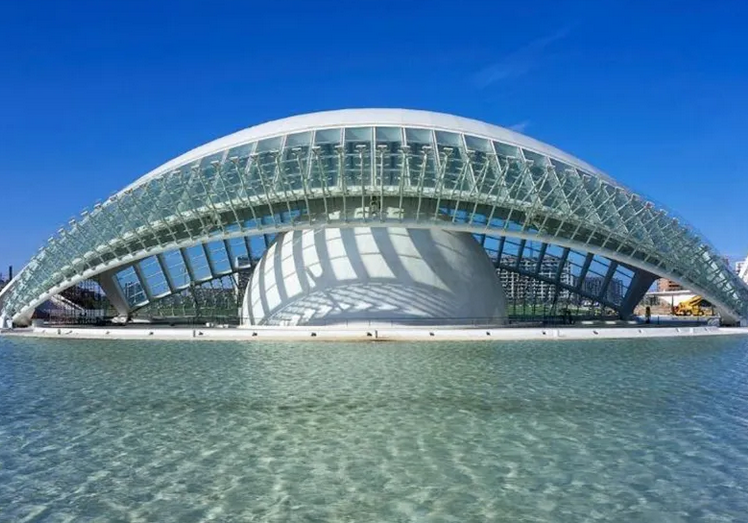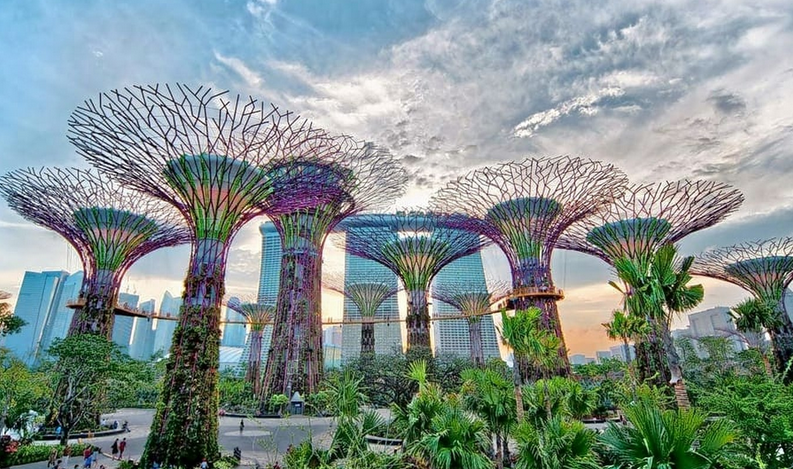Biomorphic architecture, is a captivating fusion of organic shapes and architectural design. Furthermore, it represents a harmonious integration of nature-inspired elements into the built environment. Drawing inspiration from the forms, patterns, and systems found in the natural world, biomorphic architecture seeks to create structures that not only coexist with nature but also celebrate its beauty and complexity. In this exploration of biomorphic architecture, we delve into the origins, principles, and examples of this fascinating architectural style that blurs the boundaries between the artificial and the natural.

Origins of Biomorphic Architecture
The roots of biomorphic architecture can be traced back to the early 20th century, with architects and designers inspired by organic shapes and biological structures. Visionaries like Antoni Gaudí, known for his iconic Sagrada Família in Barcelona, and Frank Lloyd Wright, whose Fallingwater residence seems to emerge from the surrounding landscape, paved the way for the biomorphic architecture movement. Their visionary designs challenged traditional notions of form and function, embracing the inherent beauty and efficiency of natural forms.
Principles of Biomorphic Architecture
At its core, biomorphic architecture is guided by principles that seek to emulate the efficiency, resilience, and beauty of natural systems. Biomimicry, the practice of imitating nature’s designs and processes, plays a central role in biomorphic architecture, with architects studying biological structures to inform their designs. This approach often results in fluid, curvilinear forms, dynamic facades, and integrated green spaces that promote sustainability and enhance the user experience.
Examples of Biomorphic Architecture
Throughout history, architects have created stunning examples of biomorphic architecture that push the boundaries of traditional design. One notable example is the Eden Project in Cornwall, UK, designed by architect Nicholas Grimshaw. This iconic botanical garden features a series of interconnected biomes that resemble giant soap bubbles, creating a striking visual contrast against the rugged landscape. Another example is the Guggenheim Museum Bilbao, designed by Frank Gehry, whose undulating titanium facade echoes the surrounding hills and river.
Innovations in Biomorphic Architecture
Advancements in technology and materials have enabled architects to push the boundaries of biomorphic architecture even further. From 3D printing and parametric design to sustainable materials and green building techniques, architects are leveraging cutting-edge tools and techniques to realize their biomorphic visions. Projects like the Bullitt Center in Seattle, known as the greenest commercial building in the world, showcase the potential of biomorphic designs to create spaces that are not only visually stunning but also environmentally responsible.
Biophilic Design Elements
Biophilic design, which seeks to incorporate natural elements and patterns into the built environment, is closely related to biomorphic architecture. Features such as green roofs, living walls, and indoor gardens are common in biomorphic buildings, providing occupants with access to nature and improving their overall well-being. These design elements also help regulate indoor air quality, reduce energy consumption, and promote a sense of connection to the natural world.
Adaptability and Flexibility
Biomorphic designs often prioritize adaptability and flexibility, allowing structures to evolve and respond to changing environmental conditions. Dynamic facades, movable components, and modular construction techniques enable buildings to adjust to fluctuations in temperature, sunlight, and wind patterns. This adaptive approach enhances the resilience of biomorphic structures and prolongs their lifespan, reducing the need for costly renovations or replacements.
Cultural and Symbolic Significance
Beyond their functional and environmental benefits, biomorphic buildings often carry cultural and symbolic significance. Inspired by local traditions, mythology, or natural landmarks, these structures serve as landmarks and cultural icons. Moreover, they resonate with local communities. For example, the Lotus Temple in Delhi, India, with its flower-like form and serene atmosphere, has become a symbol of peace and unity for people of all faiths.
Educational and Inspirational Spaces
Biomorphic buildings can also serve as educational and inspirational spaces, sparking curiosity and creativity in visitors of all ages. Science museums, botanical gardens, and eco-lodges often feature biomorphic architecture to educate the public. Furthermore, they educate about environmental conservation and sustainable living practices. Interactive exhibits, guided tours, and hands-on workshops provide opportunities for experiential learning and engagement with nature.
Conclusion
In conclusion, biomorphic designs represent a bold and innovative approach to design. Additionally, the designs seek to bridge the gap between the built environment and the natural world. By drawing inspiration from the beauty and complexity of nature, architects are creating structures that are not only aesthetically pleasing but also sustainable, resilient, and harmonious with their surroundings. As we continue to face environmental challenges and urbanization pressures, biomorphic designs offers a compelling vision for a more harmonious and sustainable future.

